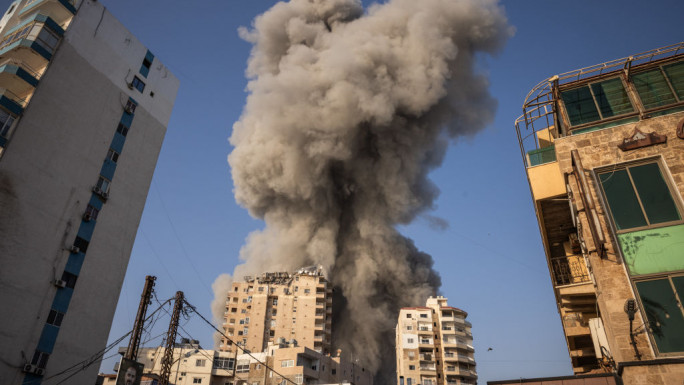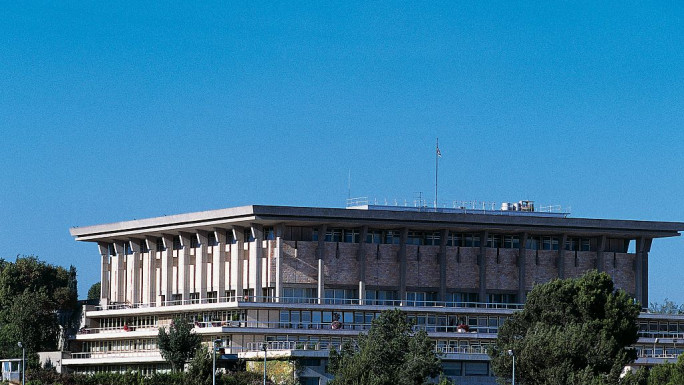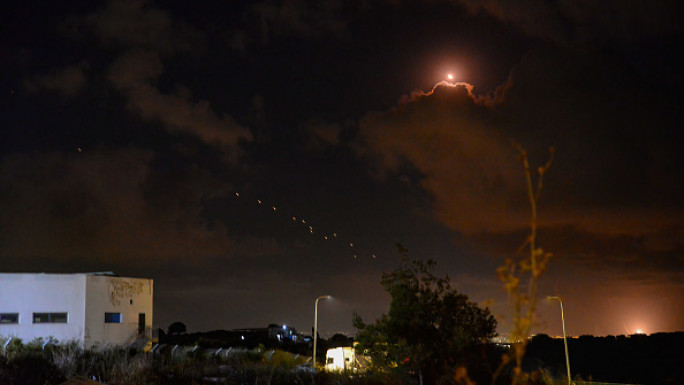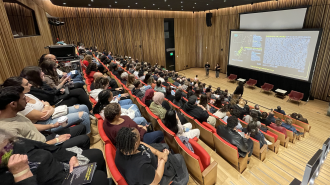![Gaza's port and its surrounding ecosystem are often the unforeseen victims of Israeli bombardments [Getty Images]](/sites/default/files/styles/image_360x240/public/2021-06/GettyImages-452014824.jpg?h=903dff9f&itok=gDfb0RxL)
Gaza's battered ecosystem reels after relentless Israeli onslaughts
![Gaza's port and its surrounding ecosystem are often the unforeseen victims of Israeli bombardments [Getty Images]](/sites/default/files/styles/image_360x240/public/2021-06/GettyImages-452014824.jpg?h=903dff9f&itok=gDfb0RxL)
Whilst Gaza's most recent confrontation ended in May, it has since left environmental damage that will affect the health of humans, animals, and plants for years to come. This is especially the case in the north of the Gaza Strip.
The Water and Environmental Quality Authority and the Ministry of Agriculture in the Gaza Strip blamed the Israeli authorities for the consequences and repercussions of serious environmental pollution, which is particularly severe in the Beit Lahia municipality area in northern Gaza.
During the most recent onslaught, Israeli airstrikes targeted and bombed a group of large warehouses that supply agricultural products such as fertilisers, pesticides and plastic. After being shelled, their combustion has led to corrosive and toxic-contaminated waste.
"It is difficult to truly gauge how toxic the combination of chemicals, pesticides and environmental waste would have been, especially when set on fire"
The consequences of this catastrophe are clear: the waste will leak into the aquifer and contaminate water and soil. Meanwhile, the government in Gaza doesn't have the capabilities to transport this contaminated soil or deal with it safely.
The owner of the Khudair warehouses in Beit Lahia, northern Gaza Strip, Hani Khudair, said that Israel targeted the warehouses with shells on May 13, which led to a huge fire. While they were able to put it out, they had to flee whilst the area was being shelled.
" Civil Defence took several days to extinguish it," he said.
Khudair stressed the difficulty of determining the chemicals that reacted with each other, due to the complete bombing of warehouses. He pointed out that they import nearly 4,000 products, adding that, "in the warehouse, there were nearly 300 tons of insecticides and about 2,000 tons of agricultural fertiliser."
He pointed out that these agricultural fertilisers, when used for plants, are recommended not to be used by the owner after 60-70 days. It is difficult to truly gauge how toxic the combination of chemicals, pesticides and environmental waste would have been, especially when set on fire. Nonetheless, to grasp the scale of loss, he estimates the losses of his warehouses at $20 million.
|
He explained out that they didn't expect Israel to target their warehouses.
"Israel's targeting of the factories and warehouses in the industrial zone, which was supposed to be the safest area, confirmed that the Israeli goal is to destroy the Palestinian economy in Gaza," pointing out that his company supplies nearly 60 percent of the market needs of agricultural supplies.
"The market has a deficit of nearly 80 percent, especially as farmers are approaching a new farming season," he added.
He pointed out that nearby residents are upset with the stench that continues to reek across the neighbourhood. Meanwhile, he is trying to remove the rubble with individual efforts, especially if government efforts to remove the accumulated waste from the warehouses are delayed.
"Some international institutions have proposed building stone cells and burying the waste. That will take a long time. We need a quick solution."
Bahaa al-Agha, the director of the General Administration for Environmental Policies and Planning in the Water and Environmental Quality Authority in the Gaza Strip, confirmed that Israel targeted four huge warehouses during its recent escalation in Gaza, belonging to the Siksik Plastics Company, the Hanif building materials and paints, the Fumco Sponge Company, and most dangerously, the Khudair company for agricultural supplies.
"The risk is that these are chemicals from agricultural pesticides and fertilisers. Contaminated waste caused by this fire are currently estimated at 259 tons," he explained.
He stressed that the Civil Defence made great efforts to control the fire, and used huge amounts of sand to extinguish it, explaining that the stores contained about 150 tons of pesticides and agricultural waste.
He noted that environmental disaster lies ahead if the chemicals leak into the aquifer, pointing out that they have reached out to several UN organisations asking them to help deal with this disaster and to get rid of these chemical wastes safely, as they cannot move it to the landfill due of the environmental and health hazards to soil and water.
"UNDP has proposed to close the area until we are given guidance from specialists on how to dispose of it, after samples of these residues have been examined and the severity assessed," he said.
He pointed out that the Israel's targeting of sewage centres and sewage treatment plants has forced Gazan municipalities to drain wastewater without treatment into the sea.
"Sea pollution has reached 85 percent," he said.
The Ministry of Agriculture's spokesman in Gaza Strip, Hani al-Bassiouni, said the repeated targeting of warehouses has clear negative effects on human beings, animals, the environment and public health.
"We can't determine the extent of the damage yet," he said.
He pointed that the ministry is unable to deal with these contaminated waste, so it has appealed to the Global Environment Facility and others to address this disaster and its negative effects.
Al-Bassiouni said: "Unfortunately no one has responded."
He said that the ministry is conducting a number of workshops with specialists and experts in Gaza at the headquarters of the Training and Development Center to develop a plan to address the harmful effects of the environment and public health in that area, and how it will affect people’s health, as well as agricultural in the coming years.
Entsar Abu Jahal is a Palestinian journalist covering current events. She is currently pursuing a master's in journalism and works with several local and Arab journals, as well as various local stations.




 Follow the Middle East's top stories in English at The New Arab on Google News
Follow the Middle East's top stories in English at The New Arab on Google News


